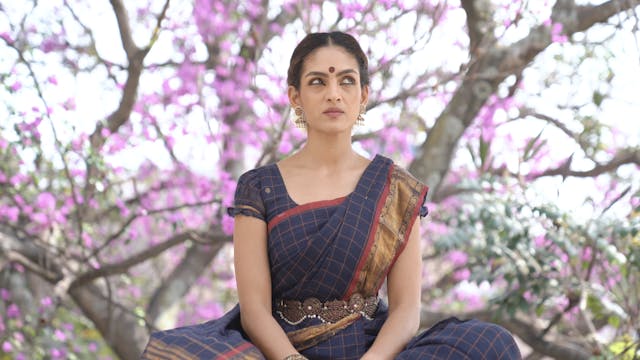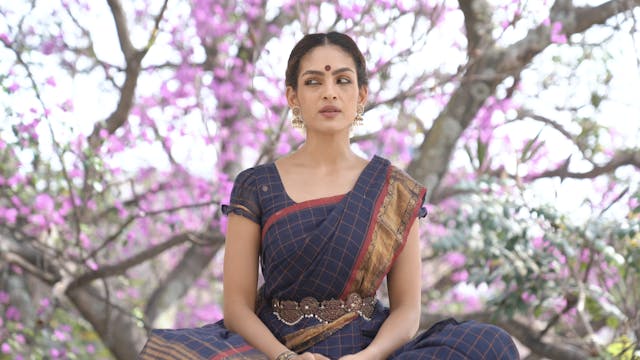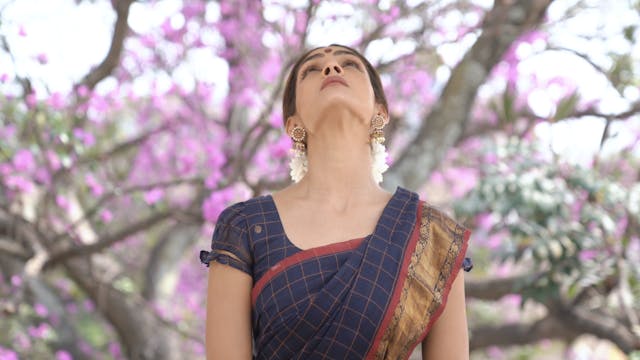The toes are considered one of the Upāngas, or minor limbs.
The movements are used primarily to communicate meaning in the context of gesture.
Please refer to the Shloka below for pronunciation. Please note that the separate movements of the head when put together in a Shloka form 'Sandhis', or compound words in the Sanskrit language. Words like 'ca', 'thatha', mean "and", "also". The separate words for each movement are also given below the shloka.
Adhakśiptatathokśiptāha kunćitaśca prasāritaha
samlagnaśćēti ćaranāngulyāha panćada matāha
Adhakśipta
Ukśiptāha
Kunćitaha
Prasāritaha
Samlagna
Up Next in Natyashastra: Angas & Upangas
-
Driśti bheda Introduction
The eye movements are considered one of the Mukhaja, or gestures of the face according to the Nātyasāstra.
The movements are used primarily to communicate meaning in the context of gesture.
-
Driśti bheda Shloka
The eye movements are considered one of the Mukhaja, or gestures of the face according to the Nātyasāstra.
The movements are used primarily to communicate meaning in the context of gesture.
Please refer to the Shloka below for pronunciation. Please note that the separate movements of the head w...
-
Grīva bheda Introduction
The neck movements are considered one of the Mukhaja, or gestures of the face according to the Nātyasāstra.
The movements are used primarily to communicate meaning in the context of gesture.


